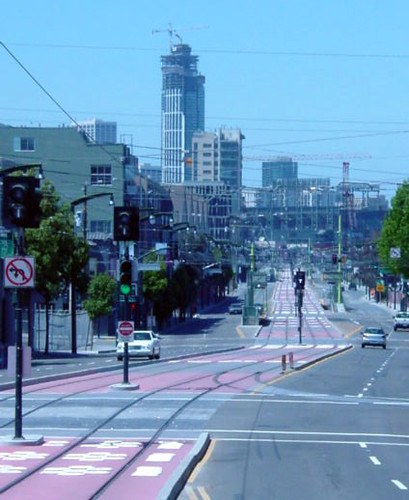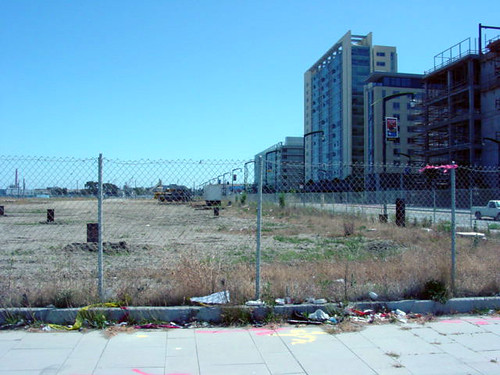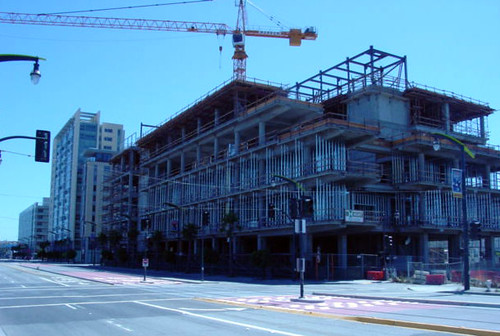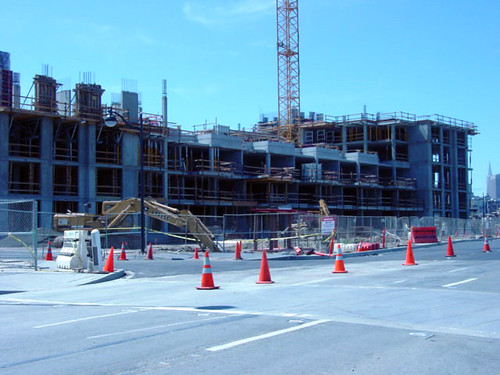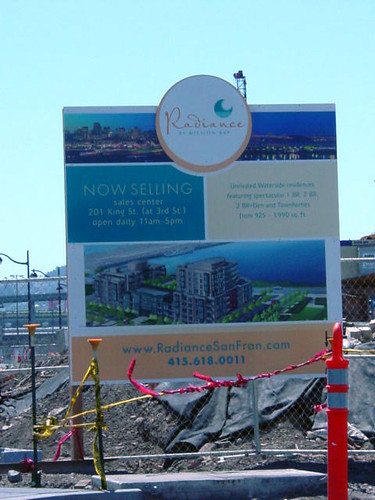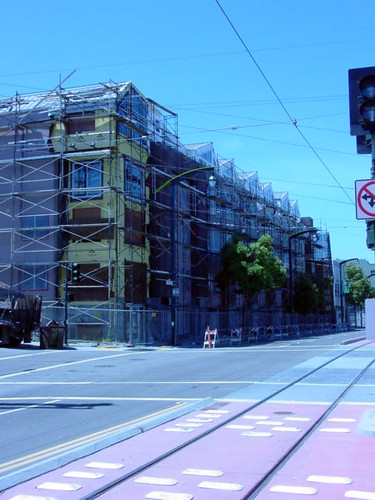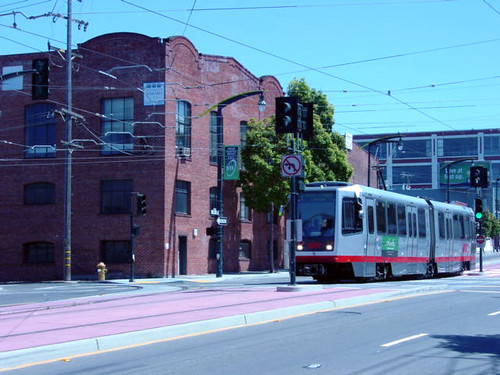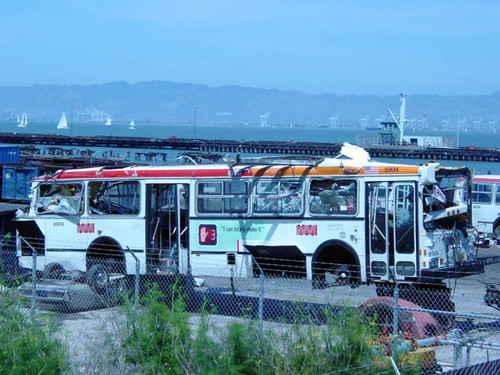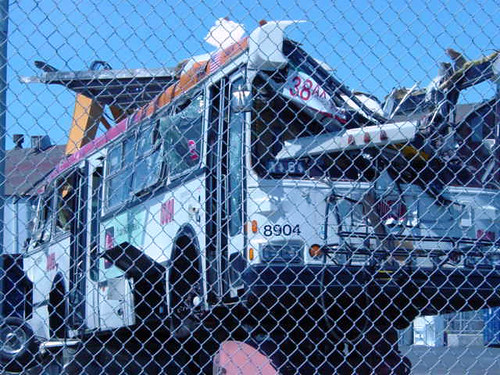So when I got a comment about not doing my homework on San Francisco I was a bit incensed, especially because it was an anonymous troll and I feel like I pay pretty close attention to what is going on around the country. They were bound to get to my little corner of the blogosphere at some point but lets cut to the chase. Oakland will always think of itself as less than San Francisco, and this BRT plan shows it. The fact of the matter is that even though San Francisco is planning BRT too, that doesn't make Oakland or AC Transit cooler. In fact it makes AC Transit look even worse because San Francisco's BRT line on Geary is going to be rail ready. What do I mean when I say that? Well according to the SFMTA site, rail ready means the following...
In the AC Transit EIS, it states that Light Rail is a long term goal in the corridor. Long term probably means next century.
The center-running bus rapid transit alternative will be designed to the physical dimensions required to accommodate a light rail vehicle. The Geary BRT Study will also determine the costs and feasibility of implementing a more extensive definition of rail-ready, which aims to minimize future construction impacts if resources become available to convert the bus rapid transit project to light rail. This definition would potentially include installing the rails and sub-surface electrical work, relocating utilities, and building longer platforms to accommodate light rail vehicles during the initial BRT construction.
It was chosen as the mode for the Locally Preferred Alternative (LPA), with the understanding that LRT service would be considered the long-term goal in the corridor.and
The BRT transitway and stations would be designed for future conversion to LRT service. Placement and configuration of BRT facilities would be consistent with requirements for upgrading the BRT transitway to an LRT guideway and extending the low-platform BRT stations to serve up to two lowfloor light rail vehicles. No timeline or program for such a conversion has been established.
On the other side of the bay, the local advocates at Rescue Muni are pushing for a rather speedy timeline for transformation including putting the rails in immediately.
Therefore, we support a BRT project that is "Rail-Ready" or ready for easy conversion to rail when funding for that project can be secured. We also support aggressively pursuing rail along the Geary Corridor...Put the rails in now! Another requirement of "Rail-Ready" BRT is to lay the rails now. It is our understanding that rails can sit for many years without harm to their functionality. And when it comes to rapid transit projects, the rails aren't the main cost of the project. Again, if we don't put rails in now, the bus lanes will have to be torn out and reconstructed, creating a mess.So if you think that AC Transit is a forward thinking organization that doesn't think of themselves as just a bus company you would be wrong. I believe their intent is to never improve to rail. A lot of people are getting suckered into this plan because its the best they can do at the moment and because its cheap. Since when did this country not want to do things right the first time? While I think that BRT in general is a sham, the guys at Rescue Muni and the SFMTA know that their constituents want rail and are going to get it to them as fast as possible, on the other hand AC Transit runs a bus system that believes they are operating for just the poor, so they are going to give them poor service. I predict super high operating costs for these corridors because lets face it, with all those drivers in all those buses, thats gonna cost a lot of money.

